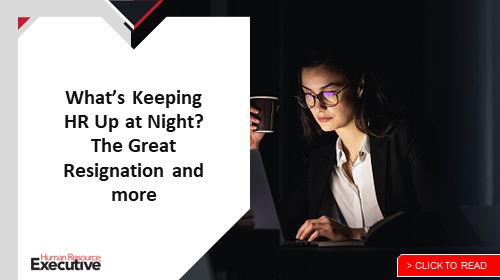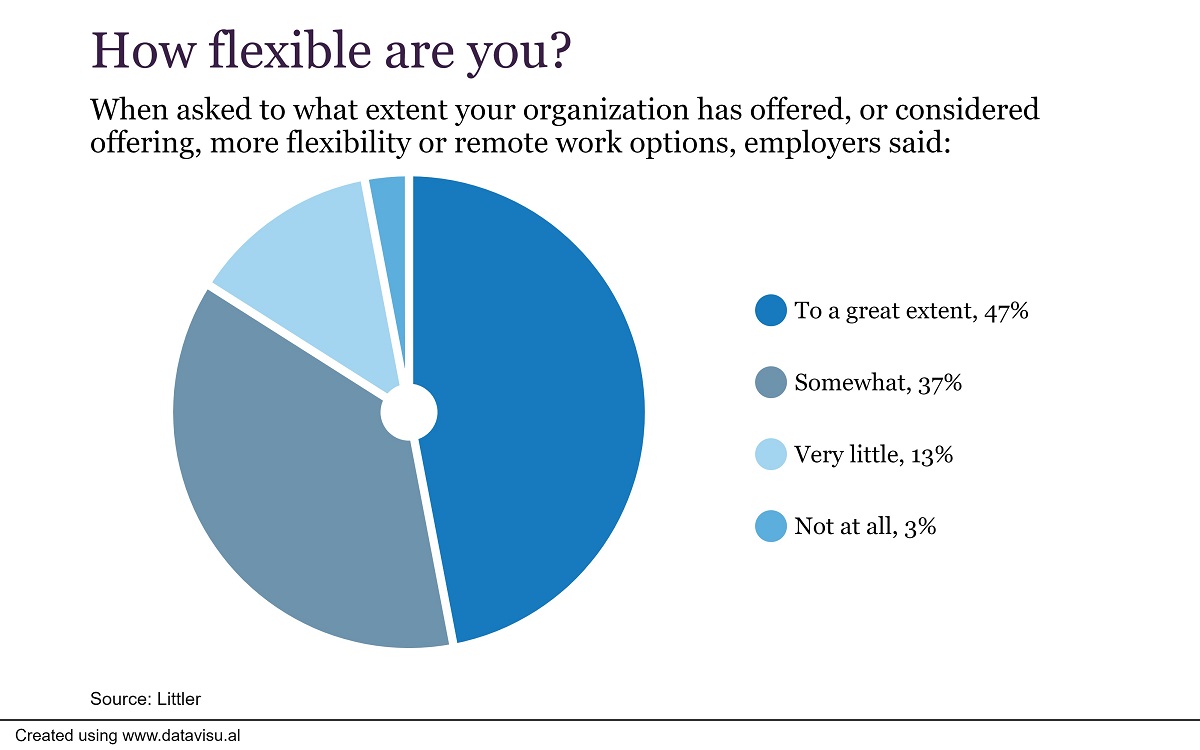As workers increasingly return to offices during a historically tight labor market, and after more than two years of a global pandemic, executives from U.S. employers are split on vaccine mandates but aligned on reopening offices and the benefits of flexible work models, according to a new survey from Littler.
The data from Littler’s 10th annual Employer Survey, which garnered responses from 1,275 in-house lawyers, C-suite executives and human resources professionals, reveals insights into several workplace issues and the fast-changing regulations facing employers.
Among other findings, the survey indicates that although employer approaches to vaccine mandates have evolved since last year—41% of respondents say they are mandating vaccination or requiring regular testing, up from 21% in Littler’s August 2021 survey—most policies are set at this point in the pandemic. Only 1% plan mandatory vaccination policies that haven’t been implemented yet, and only 2% remain unsure of their plans. The largest share (56%) said they will not implement a vaccination or testing mandate unless required by law.
Related: HR back in charge of vaccine mandates
According to Devjani Mishra, a leader of Littler’s COVID-19 Task Force and co-leader of the firm’s Vaccination Working Group, given today’s tight labor market and ongoing polarization around vaccinations, it’s no surprise that top concerns regarding mandates centered around resistance from individuals opposed to vaccination and the potential loss of staff.
 A breakdown of the findings suggests that some of these challenges could be more daunting in perception than in reality, Mishra says. For instance, respondents whose organizations have vaccine mandates in place are less concerned about them leading to loss of staff (51% vs. 85% of those without mandates) and the difficulty of recruiting new staff (32% vs. 65%).
A breakdown of the findings suggests that some of these challenges could be more daunting in perception than in reality, Mishra says. For instance, respondents whose organizations have vaccine mandates in place are less concerned about them leading to loss of staff (51% vs. 85% of those without mandates) and the difficulty of recruiting new staff (32% vs. 65%).
Similarly, the survey found that the perceived benefits of requiring vaccinations are more pronounced among those whose organizations have such policies in place. For instance, 68% of those with mandates believe that such policies can make employees feel safer and facilitate more in-person work (compared to 41% without mandates), and 57% feel they can help improve business continuity (compared to 46% without mandates).
“Employers broadly recognize the potential benefits of increasing COVID-19 vaccinations, but the lack of a uniform public policy approach and concerns about competition for talent leave many businesses without an easy way to get there,” Mishra says. She adds that as more employees return to on-site work, employers must focus on understanding worker sentiment, monitoring vaccination rates in their workplace, considering the implications of evolving and divergent rules and regulations, and weighing the various costs associated with having (or not having) vaccination and testing policies.
Heading back to offices
There was more alignment among employers on plans for returning employees to in-person work. Nearly 70% of respondents said they had already instituted a formal return-to-office policy as of the end of March (54%) or would do so between April and August (13%).

Employers surveyed also recognize the importance of offering flexibility and remote work options in today’s talent market. Nearly all respondents (97%) already are offering or are considering expanding flexibility and remote work options to help attract and retain employees.
Related Why SAP is embracing flexible work for its 100K employees
“We are at a pivotal moment in the world of work. Employees have become comfortable with not coming into the office, and given the current labor market, they have substantial leverage in asserting their preferences,” says Barry Hartstein, co-leader of Littler’s COVID-19 Vaccination Working Group and co-chair of the firm’s EEO & Diversity Practice Group. “There’s plenty of opportunity for employers to retain the benefits of both remote and in-person work, but they must be transparent and communicative with their employees and approach the discussion with the knowledge that the workplace has irrevocably changed.”
Despite the broader acceptance of flexible work, 86% of respondents said maintaining company culture and employee engagement within a hybrid work model is an ongoing pressure point. Just over half were concerned about ensuring that remote/hybrid work flexibility is applied fairly to their employees (53%) and about the efficiency of communication and meetings that combine remote and in-person workers (52%).
Regulatory realities
Paid sick and family leave requirements topped the list of regulatory changes that employers are watching for the year ahead, with 73% expecting an impact on their businesses from those changes.
 The high level of concern is not surprising, according to Michael Lotito, Littler shareholder and co-chair of the firm’s Workplace Policy Institute, citing the changes spurred by the pandemic and the growing patchwork as states and localities continue to update their paid sick and family leave laws. Fifty-six percent of respondents also said they expect changes to income equality measures (e.g., minimum wage increases, pay equity, pay transparency) to affect their businesses.
The high level of concern is not surprising, according to Michael Lotito, Littler shareholder and co-chair of the firm’s Workplace Policy Institute, citing the changes spurred by the pandemic and the growing patchwork as states and localities continue to update their paid sick and family leave laws. Fifty-six percent of respondents also said they expect changes to income equality measures (e.g., minimum wage increases, pay equity, pay transparency) to affect their businesses.
“Employers are being hit from all sides with new employment law-related challenges,” Lotito says. “As the hot labor market and the Biden administration continue to empower employees, these issues will only intensify in the year to come, underscoring the importance of staying up to date on policy changes and getting ahead of new and emerging risks.”
The post How the talent squeeze is driving flexible work options appeared first on HR Executive.